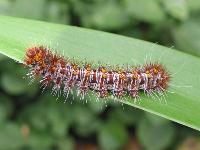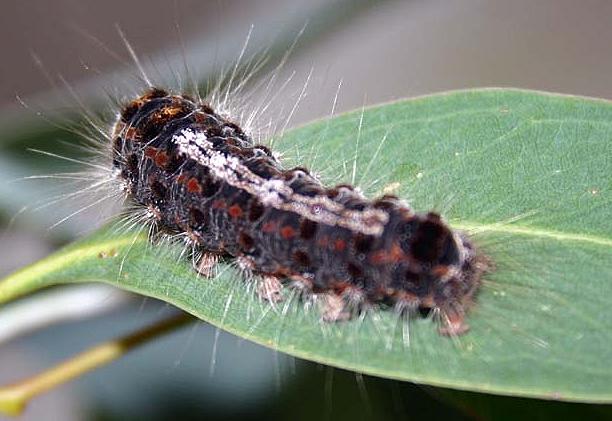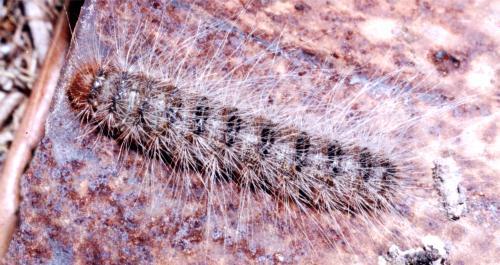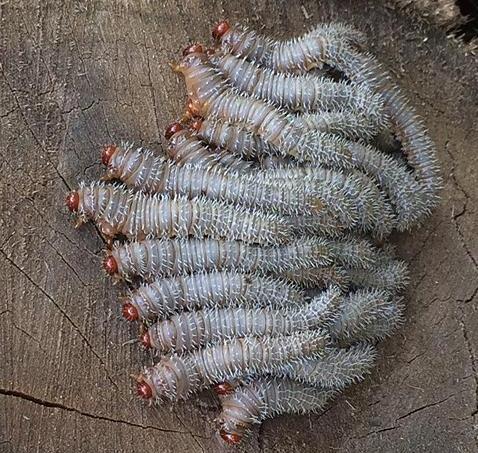
| (donherbisonevans@yahoo.com) and Stella Crossley & Christina Jewett |

| (donherbisonevans@yahoo.com) and Stella Crossley & Christina Jewett |
There are 4 different ways that a caterpillar can cause Urticaria:




People can get Urticaria from more than one of these causes: maybe the hairs cause an allegic reaction and also cause infection, or any other combination of the four causes.
So never touch a hairy caterpillar. If you want to move a caterpillar : then put a bit of paper or a leaf in front of it, and then tickle the rear of the caterpillar gently, with a twig or something, until the caterpillar walks onto the paper or leaf, then take that with the caterpillar on it, and put it somewhere out of trouble.
The problem is not confined to the live caterpillars. As the caterpillars grow: they moult and shed their old (hairy) skin to grow a new bigger one. The old skins decompose and the hairs can blow about and cause Urticaria if they land on someone's skin.
Furthemore, when these hairy caterpillars pupate in a cocoon, they usually attach their hairs to the cocoon, so touching the cocoon can also cause Urticaria.
In north and south America, caterpillars of species in the family MEGALOPYGIDAE) also have hairs and toxins which when in contact with human skin can cause severe pain and hemorrhagic eruption. Puss Caterpillars or Flannel Moths are common in south eastern U.S.,and in the southwestern U.S. there is a related species in the same family called the Mesquite Stinger. Christina had personal experience with this Mesquite caterpillar. Just brushing against the spines produces intense pain as bad as any wasp sting, and lasting at least half an hour.
 FAQ |  butterflies |  FAQS |  Lepidoptera |  moths |  FAQ |
(updated 22 March 2013, 24 January 2020, 5 November 2021)